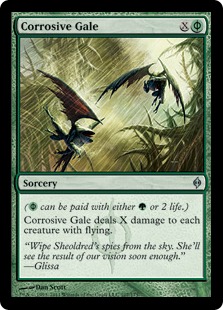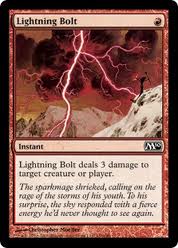Are you a Quiet Speculation member?
If not, now is a perfect time to join up! Our powerful tools, breaking-news analysis, and exclusive Discord channel will make sure you stay up to date and ahead of the curve.
What’s the difference between Top 8’ing and Top 16’ing a tournament?
The difference between winning and second place?
Between winning and Top 8’ing?
A couple match points. A win or two.
Inches.

I find that there is a strange weight given to the winning list of an event over any other deck in a given tournament. Dominic Toretto would say that “winning is winning.” Close is only good enough in horseshoes and hand grenades. At least in terms of this week’s paycheck.
On the other hand, this perspective is self-defeating if we’re thinking about next week.
There have been a number of articles going up lately about the boogeyman-ish nature of UW Delver (and to an extent Delverless) decks. A common critique of the power of this deck is to cite that Esper control has won two consecutive SCG Standard Opens, crushing multiple Delver players along the way. This is a meaningless argument without going over the particulars of these wins.
The first thing to note from Jeremy Dombek’s Top 8 run in Worcester is that he was on the play against all three of his Delver opponents. This is pretty substantial, considering how high his curve is as compared to that of UW Delver. With his quarter and semifinal matches finishing 2-1, it’s not hard to imagine them going the other way.
Dombek’s finals match went 2-0 in his favor but I’m not sure how much weight to give that one. Here is an excerpt from the match coverage, which is a sequence of spells played the turn after a Day of Judgment cleared the board:
Shawn cast Ponder on turn 4, then played Moorland Haunt. Jeremy played a Ponder of his own, then a tapped land and Lingering Souls. Those Spirits would match off against Shawn’s singleton, created during the end step. Vapor Snag and Gut Shot made room for Shawn’s Spirit to attack, and he played Delver of Secrets.
I don’t know this Shawn guy, so I don’t want to say that he’s a total fish or anything, but I can’t help thinking that his play of two-for-one-ing himself to deal with half of a Lingering Souls in order to attack for one was, perhaps, a bit suboptimal.
Speaking of Lingering Souls, I don’t feel that I’m overstating things when I say that the metagame forgot that this single card has been monumental in the success of Esper over the last two weeks.
Take a look at Dave Shiels’ Top 4 list. Do you see anything in his 75 that matches up favorably with Esper’s four-for-one spell?
One copy of Sword of War and Peace. That’s it.

I think it may be time for Corrosive Gale to make a comeback in Delver sideboards. The transition back to strictly having pro-white Swords seems wise as well. These cards are phenomenal at battling Lingering Souls. If Delver players feel threatened by Esper, expect them to adapt these changes (among others) to knock Esper right back off the radar.
Along this line, I feel that Delver can realistically be adapted to beat any metagame. It’s not at the power level of actual Caw-Blade, as that deck just indiscriminately beat everything every week, but it’s pretty close to something like Jund, which experienced a lot of changes as the Standard metagame evolved. At the very least, the comparison between Snapcaster Mage and Bloodbraid Elf isn’t that far off.
In light of this power-level comparison, I do not think that any bannings in Standard are necessary.
The difference between Caw-Blade and Jund isn’t a matter of inches. It’s a matter of miles.
It’s simply the nature of Standard to have a “best deck”. Some cards and strategies are just better than others, despite the inability of many players to realize this.
Another frequent complaint that I see in the comment section of articles about various best decks is that people are too lazy to innovate something new and that that’s the reason we see the dominance of certain archetypes.
If it really were a matter of effort rather than one of objective power levels, then these people, who clearly have plenty of free time (as evidenced by them making such pointless comments directed at people that they don’t even know), would be getting their friends together and making showings like SCGBlue’s in Nashville every weekend.
To make the claim that the game’s best aren’t throwing everything that they have at the best deck of a given format is simply outrageous and lacks any merit. Sometimes it’s just the case that the best answer is to sleeve up a version of the best deck built to have an edge in the mirror.
Then once everybody is fully committed to winning the mirror, LSV shows up with Spreading Seas, Wall of Denial and maindeck Flashfreeze.
Then the metagame responds to that change. Soon enough we find ourselves tuning to win the mirror again. Then Lingering Souls gives us fits for a minute. And round and round and round we go.
I wish I had some sweet Standard brew to give you, but I really think that the current design philosophy of making super-good creatures coupled with the sheer volume of high-level competition happening in Magic right now make it so that placing well in Standard largely boils down to an understanding of the metagame.
I do want to leave something for my creatively minded readers though. The impact of design and the recent influx of competitive events is readily seen on Standard, and to some extent Legacy, but there are some formats where creativity is better rewarded.
My Super Sweet Awful Modern Deck
I’m not the biggest fan of the Modern format. This is partly due to the fact that I really liked Extended and partly due to the fact that I felt not unlike a guinea pig battling through PTQs in a largely underexplored format.
That said, the deck that I played (originally inspired by Kurtis Droge) throughout the first modern PTQ season was pretty sweet:
Special Executive for Counter-Intelligence, Terrorism, Revenge and Extortion
I feel that this deck is very close to being very good in Modern.
I didn’t do particularly well at any of the PTQs that I brought this bad boy to, but I did manage a GP Top 64 in Lincoln.
The major problem that the deck had was that, while it was strong against various combo, aggro and control decks, it struggled a lot against Jund. I pretty much needed to draw a Snapcaster Mage for every Bloodbraid Elf they had, even then I struggled combating a resolved Kitchen Finks. The matchup wasn’t unwinnable, but it certainly wasn’t favorable.
I’ve decided not to publish the sideboard that I had for the deck as I haven’t played Modern for a few months and I don’t have a very good grasp on the metagame. It looks like Martyr decks are pretty popular from browsing daily events, so I’d start with two-three Sulfur Elemental. Beyond that, having more removal/discard spells along with some graveyard hate is usually where I landed.
What I really like about this deck is the ability to quickly transition from the control to the beatdown. You’ll generally spend the early turns playing some discard, some removal and/or some counterspells before landing some creatures that are surprisingly efficient at clocking your opponent.
If you decide to pick this deck up, the most difficult aspect of playing it boils down to when you should start attacking. You really need to be able to see turns in advance in order to maximize your win percentage. Modern has some very powerful decks and missing a few points of damage can easily cost you games.

My favorite story of playing this deck comes from playing against a Melira Pod deck. My opponent was on 17 and passed his turn while being two combo pieces short of going off. I Lightning Bolt him at the end of his turn. The only other disruption that I had in hand at the time was a second Bolt to kill a Melira or Viscera Seer and I needed to start tying up my red mana to attack with a Creeping Tar Pit in order to race a potential combo effectively. Three turns later I hit him for exactly lethal, and if it weren’t for the Kitchen Finks that he drew it would have been two.
His reaction to my EoT Bolt and the conversation I had with Jens Erickson (who was watching the match) afterwards were priceless. The two were only made better by how long I tanked before making such an amateur play.
Again, the deck probably needs to be modified somehow to better combat Jund, but it’s definitely almost there.
~
Being close doesn’t feel especially good when you’re taking second in a PTQ, nor when you finish Top 16 in a 5K. However, last week’s close can lead to this week’s trophy.
-Ryan Overturf






It also loses to luck sacks
You were playing Jund though, so I just lumped the two together.
Great article.